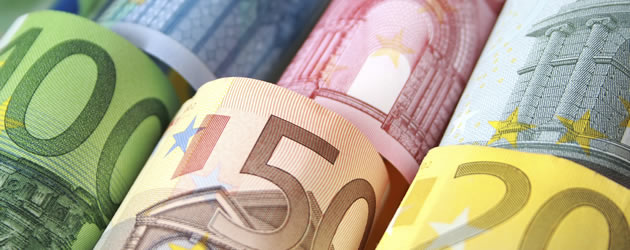- ‘Fat finger trade’ shored up Pound Sterling – Erroneous trade prompted EUR/GBP exchange rate slump
- Euro struggled to benefit from improved Eurozone data – Single currency weakened despite first quarter GDP being revised higher
- Risk appetite reduced by Chinese trade disappointment – Euro rallied as safe-haven demand increased
- Better-than-expected UK GDP estimate failed to weaken EUR/GBP exchange rate – Stronger economic growth unable to boost Pound confidence
Surprisingly Weak UK House Price Data Dented Pound Sterling (GBP)
The appeal of the Pound (GBP) declined sharply overnight in response to the latest RICS House Price Balance, which clocked in at just 19% rather than the 35% forecast. With German trade data also bettering expectations this prompted the Euro to Pound Sterling (EUR/GBP) exchange rate to trend higher in the region of 0.7872.
(Previously updated at 17:05 on 08/06/2016)
Stronger GDP Estimate Failed to Bolster Pound (GBP) Exchange Rate
In spite of the NIESR GDP estimate proving stronger-than-expected, clocking in at 0.5% rather than 0.3%, demand for the Pound (GBP) remained soft on Wednesday afternoon. As a result the Euro to Pound Sterling (EUR/GBP) exchange rate trended higher in the region of 0.7833.
(Previously updated at 11:22 on 08/06/2016)
Pound Sterling (GBP) Rallied on Trader Error and Improved BRC Sales Data
Despite a raft of referendum polls pointing towards an increase in support for ‘Brexit’ at the start of the week, this ultimately failed to keep the Pound (GBP) on a weaker footing for long. During Tuesday’s Asian session Sterling saw a sharp increase in demand, with this abrupt shift in sentiment blamed on trader error and a so-called ‘fat finger’ trade.
Nevertheless, demand for the Pound remained heightened throughout the following European session, boosted by a stronger-than-expected BRC Like-For-Like Sales figure. With consumer demand appearing to have recovered in May this eased concerns over the impact of referendum uncertainty, offering investors reason to continue piling into the currency.
Although Eurozone data proved largely positive on Tuesday, this failed to have any particular impact on the appeal of the Euro (EUR), which remained weighed down by increased risk appetite. German Industrial Production strengthened markedly in April, suggesting that the Eurozone’s powerhouse economy was in more robust health, and the first quarter Eurozone GDP figures were also revised higher. However, as researchers at BBH noted:
‘Going back to through the second quarter last year, German industrial output has risen only one month every quarter. The weak orders data warn that although output began Q2 on a firm note, there may not be much follow-through.’
Safe-Haven Demand Bolstered by Chinese Export Contraction
This weakness did not prove long-lasting, though, as demand for the Euro increased sharply on Wednesday morning. A -4.1% slump in Chinese exports in May prompted a wide decline in market risk appetite, offering fresh support to the common currency. The continued softness of the US Dollar (USD) also added upward momentum to the Euro to Pound Sterling (EUR/GBP) exchange rate, with concerns over further policy divergence between the Fed and European Central Bank (ECB) temporarily banished.
Confidence in the Pound rallied on the back of the latest Industrial and Manufacturing Production figures. In spite of expectations for a weaker showing, output was found to have strengthened markedly in April, with industrial production improving from -0.2% to 1.6% on the year. This suggested that the UK economy was in stronger shape than feared, although the impact of the result was somewhat muted by persistent worries over the outcome of the upcoming referendum.
Economist Samuel Tombs said of the result; ‘April’s sharp rise in industrial production provides much-needed support to GDP growth in Q2, but it has shaky foundations. A 3.9% month-to-month surge in electricity and gas output due to the unusually cold weather—average temperatures in April were 0.9 degrees centigrade below its long-run average—contributed 0.34pp to the rise in overall production. Meanwhile, the 2.3% month-to-month jump in manufacturing output likely will be unwind over the coming months.’
EUR/GBP Exchange Rate Forecast: Slowing UK GDP to Dent Pound
Later this afternoon additional downside pressure is likely for the Pound, with the NIESR GDP estimate for May expected to show a persistently low level of growth. Should the UK economy have continued to slow ahead of the EU referendum confidence in Pound Sterling is likely to decline once again, reducing the chances of the Bank of England (BoE) raising interest rates in the foreseeable future.
German trade data could prompt the single currency to reverse its recent gains, however, as forecasts point towards a general decline in economic conditions. The domestic trade surplus is predicted to have narrowed from 26.0 billion to 21.3 billion Euros in April due to a renewed contraction in exports. If the Eurozone’s powerhouse economy is confirmed to have experienced further slowdown pressure at the start of the second quarter the EUR/GBP exchange rate could return to a downtrend.
Current EUR, GBP Exchange Rates
At the time of writing, the Euro to Pound Sterling (EUR/GBP) exchange rate was trending narrowly around 0.7810, while the Pound Sterling to Euro (GBP/EUR) pairing was slumped in the region of 1.2800.



